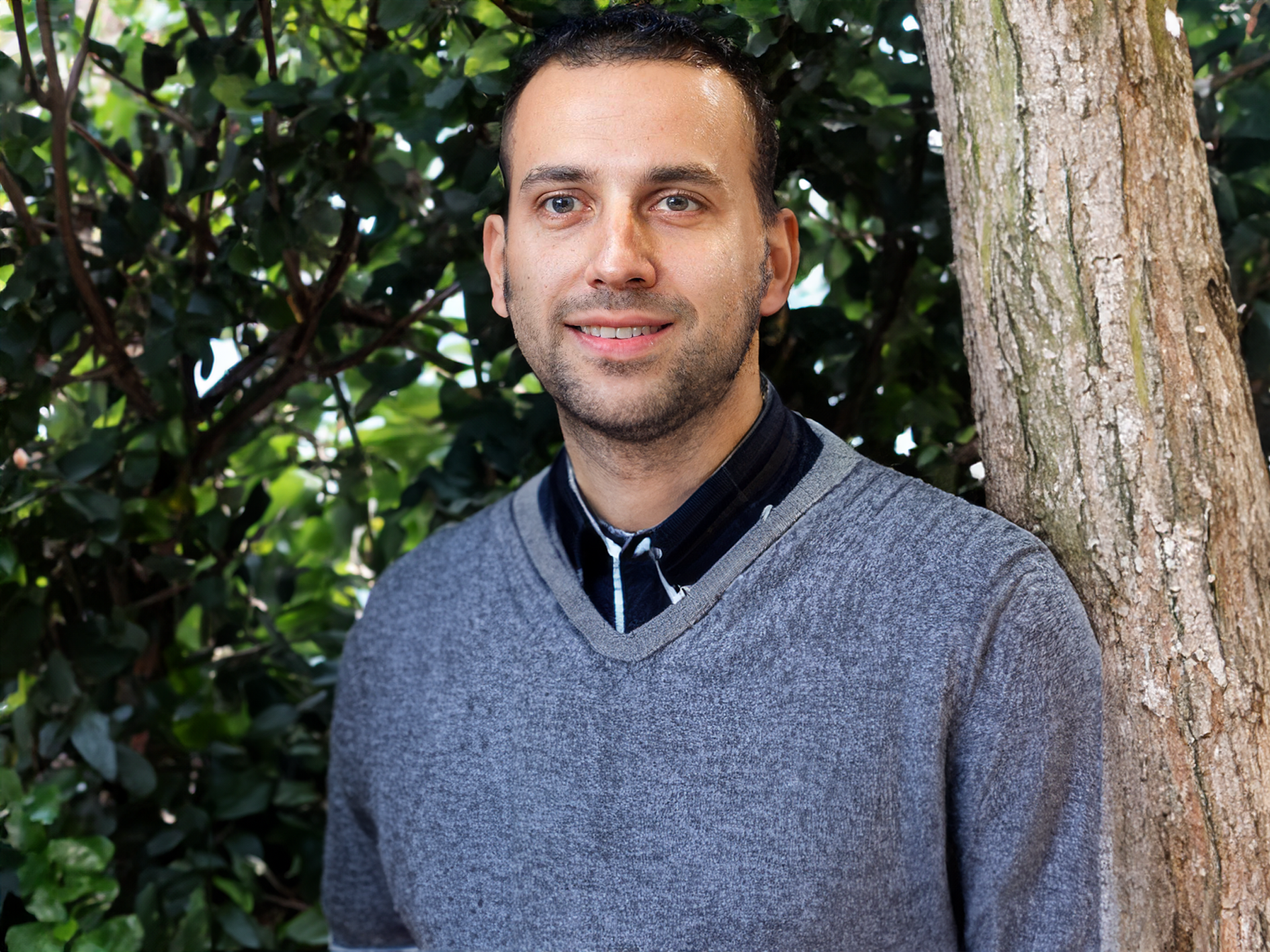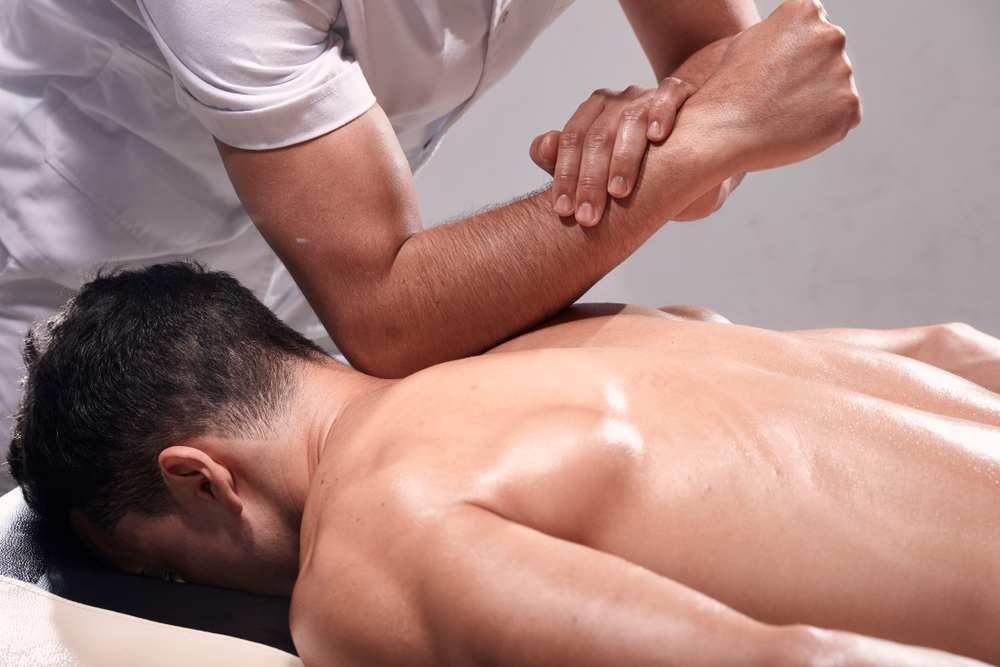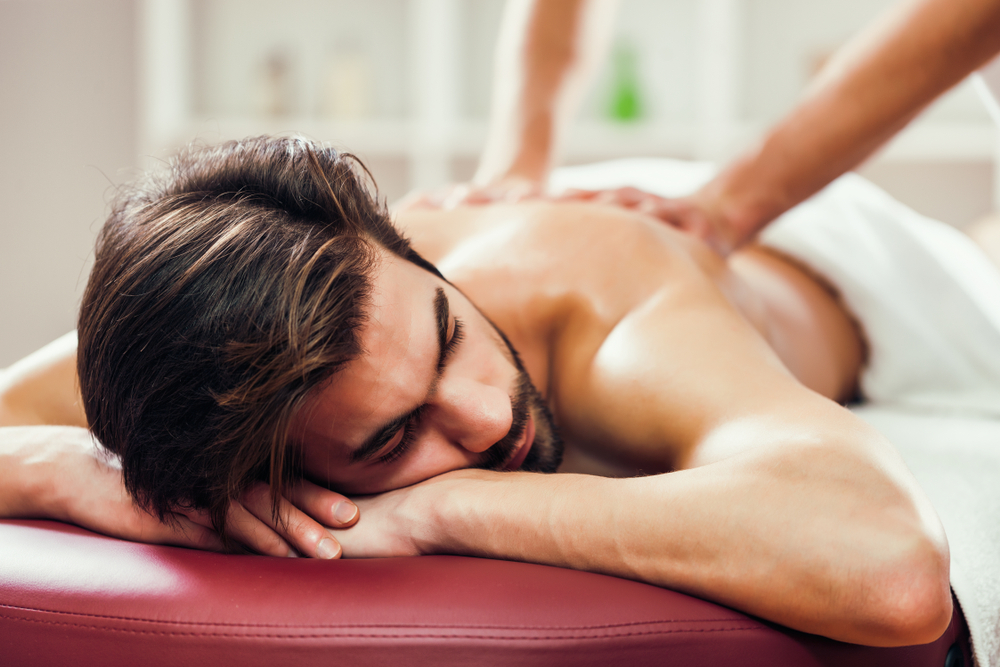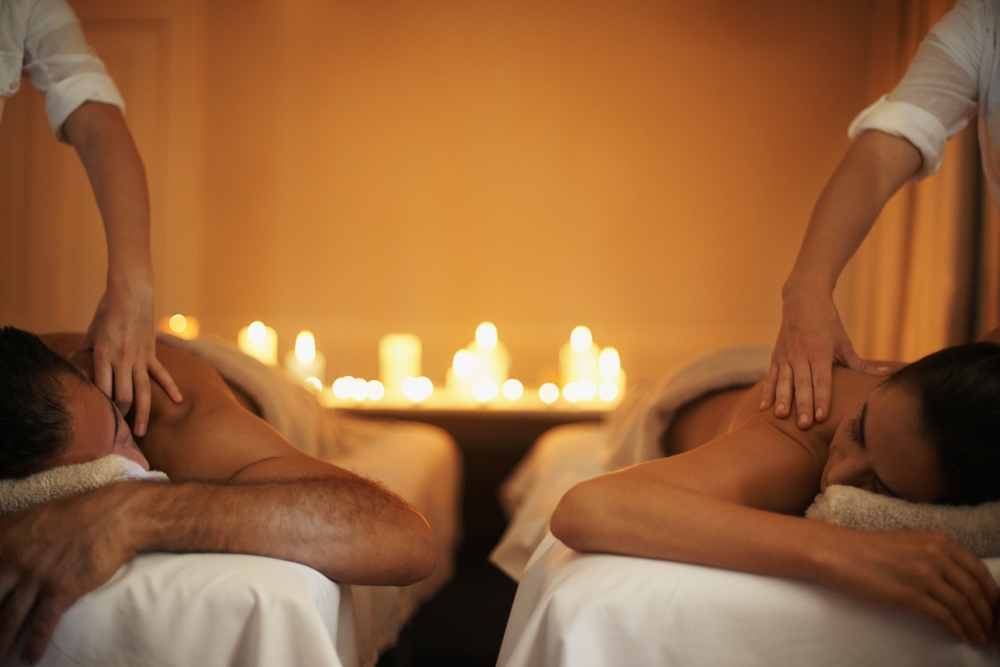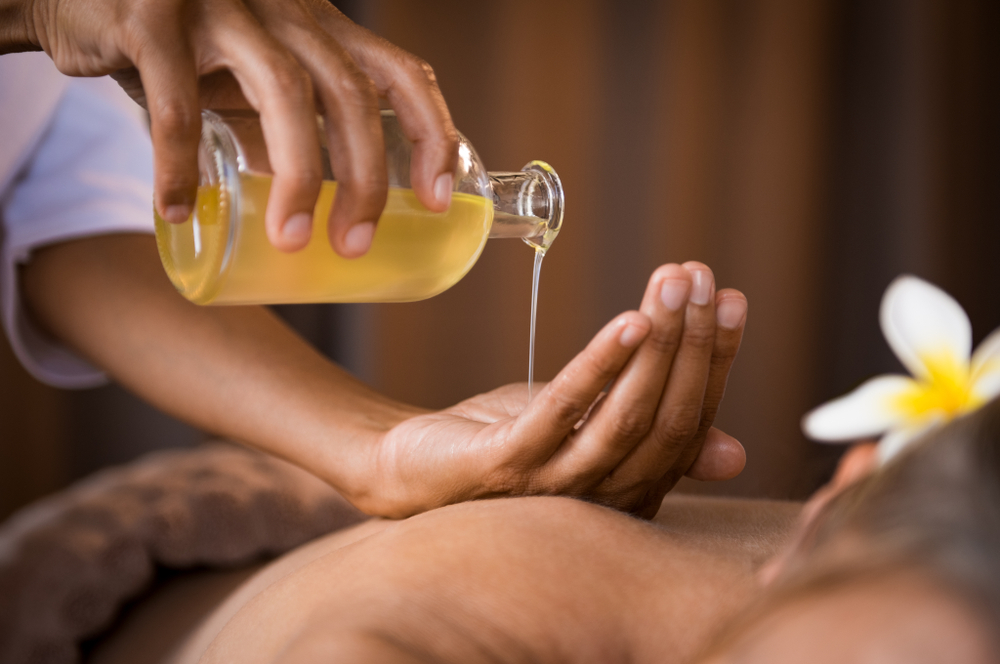
What Is Aromatherapy Massage?
Aromatherapy massage is a therapeutic technique that combines the practice of massage therapy with the use of essential oils. This method aims to enhance the physical and emotional well-being of individuals.
Among the most commonly used essential oils in aromatherapy are the following:
- ChamomileNational Center for Complementary and Integrative Health
- Eucalyptus
- Geranium
- Ginger
- Lavender
- Cedarwood
- Lemon
- Orange
- Peppermint
- Tea tree
- Bergamot
These oils are chosen for their specific properties, such as relaxation, mood enhancement, or pain relief.

Aromatherapy massage is used for relaxation, pain management, and mood improvement. These benefits are attributed to both the physical manipulation of soft tissues during the massage and the psychological effects of the essential oils.
Application Methods in Aromatherapy Massage
The process in this method involves dispersing essential oil molecules into the air using a device known as a diffuser. The diffuser breaks the essential oil into fine, breathable particles, releasing the aroma into the room.
Types of Diffusers
There are several types of diffusers, including ultrasonic, nebulizing, heat, and evaporative diffusers. Each has its way of dispersing oils into the air, but ultrasonic and nebulizing diffusers are most commonly used in therapy settings for their effectiveness.
Benefits of Diffusion
- Inhalation
When essential oils are diffused, their molecules are inhaled. This inhalation can have an immediate effect on the limbic system in the brain, which influences emotions, heart rate, blood pressure, breathing, and stress levels. - Ambiance
Diffusing essential oils during a massage creates a therapeutic ambiance. The scent can help set a relaxing mood and enhance the overall massage experience. - Room-Wide Benefits
Everyone in the room can benefit from the diffused oils, not just the person receiving the massage. This is particularly beneficial in a spa or group therapy setting.
Remember the considerations the choice of essential oils for diffusion is important. Some oils are more relaxing, while others can be energizing or uplifting. The therapist will select oils based on the desired outcome of the massage session.
Topical Application of Essential Oil
In this method, essential oils are mixed with a carrier oil or massage lotion and then applied directly to the skin. Carrier oils like sweet almond oil, jojoba oil, or coconut oil are often used because they are gentle on the skin and help in the absorption of essential oils.
The Techniques is oil blend is applied using various massage techniques. These can range from gentle strokes for relaxation to more vigorous techniques for deep tissue massage.
Benefits of Topical Application
- Direct Skin Benefits
Essential oils applied topically can have direct benefits on the skin, such as moisturizing, soothing, or healing effects. - Targeted Relief
This method allows for targeted application. For example, peppermint oil can be applied to areas of muscle tension or headache relief. - Systemic Absorption
When applied to the skin, essential oils are absorbed into the bloodstream, where they can circulate and affect the body systemically, providing benefits beyond just the area of application.
The application methods in aromatherapy massage – diffusion and direct topical application – are chosen carefully to maximize the therapeutic benefits of the essential oils.
This careful selection and application enhance the overall effectiveness of the massage, addressing both psychological and physical aspects of health and well-being.
The Uses of Aromatherapy Massage
According to the National Center for Complementary and Integrative Health (NCCIH) reports that approximately 7% of adults in the United States regularly receive massage therapy.
This form of therapy involves skilled techniques of pressing and kneading muscles and lymph nodes.
Various massage styles exist, including:
- Deep tissue massage
- Swedish massage
- Prenatal massage
- Hot stone massage
Incorporating essential oils into these massage therapies can elevate the experience, turning it into aromatherapy massage.
Massage therapy is recognized for its ability to temporarily alleviate physical discomfort and enhance one’s mood. The addition of an essential oil in an aromatherapy session may amplify these benefits.
As an example, for individuals experiencing discomfort due to depression, the use of a mood-enhancing essential oil such as orange might contribute to an improved sense of well-being.
What is Aromatherapy?
The use of essential oils for specific purposes is known as aromatherapy. Eucalyptus, lavender, orange, and bergamot are a few examples.
All of these “aromas” are derived from plants; they include flowers, tree extracts, and herbs. Since essential oils are highly concentrated, it is best to dilute them before using them in lotions, humidifiers, or other softer oils.
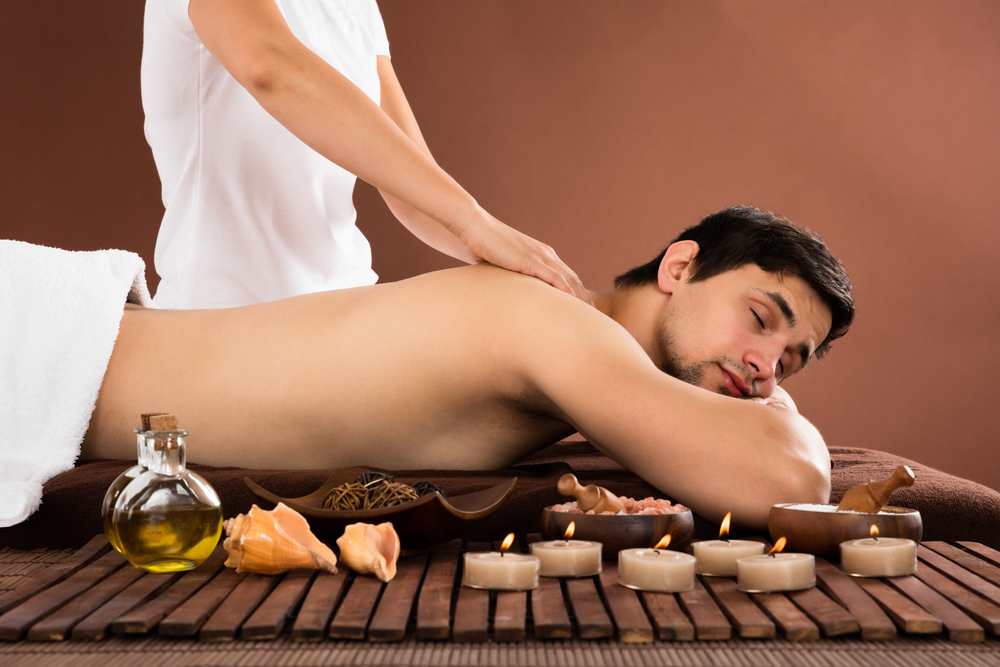
Aromatherapy’s overarching goal is to enhance your emotional and physical health. More people than ever before are experimenting with essential oil products by diluting them for use on the skin or diffusing them at home.
Risks of Aromatherapy Massage
Aromatherapy massage is generally associated with few dangers. One thing to consider is the potential sensitivity to the essential oils used during your session. Before administering the oil to the skin, your massage therapist should always dilute it with massage lotion or a carrier oil.
If you’re not sure about an oil, ask the therapist to diffuse it instead of putting it directly on your skin.
The following are some of the symptoms of an allergic reaction to essential oils:
- rash,
- hives,
- redness,
- swelling,
- and itching
Another factor to consider is the absence of regulation surrounding essential oils and essential oil products used in aromatherapy massage. Because many essential oils are classified as cosmetics, the Food and Drug Administration (FDA) does not regulate their safety and efficacy.
Is Aromatherapy Massage Safe During Pregnancy?
Aromatherapy massage can be safe for pregnant women, but it needs careful consideration:
- Consult a Healthcare Professional First
- Be Cautious with Essential Oils
- Mix Essential Oils with a carrier oil.
- Choose a Qualified Aromatherapist or Massage Therapist
- Avoid Certain Massage Techniques
- Listen to the Body
- Use of Gentle Oils
In the end, aromatherapy massage has certain advantages for expectant mothers; nevertheless, it must be customized to the specific requirements and medical conditions of the expectant mother, under the supervision of a professional, and with the necessary safety precautions.
Advice for Giving an Aromatherapy Massage
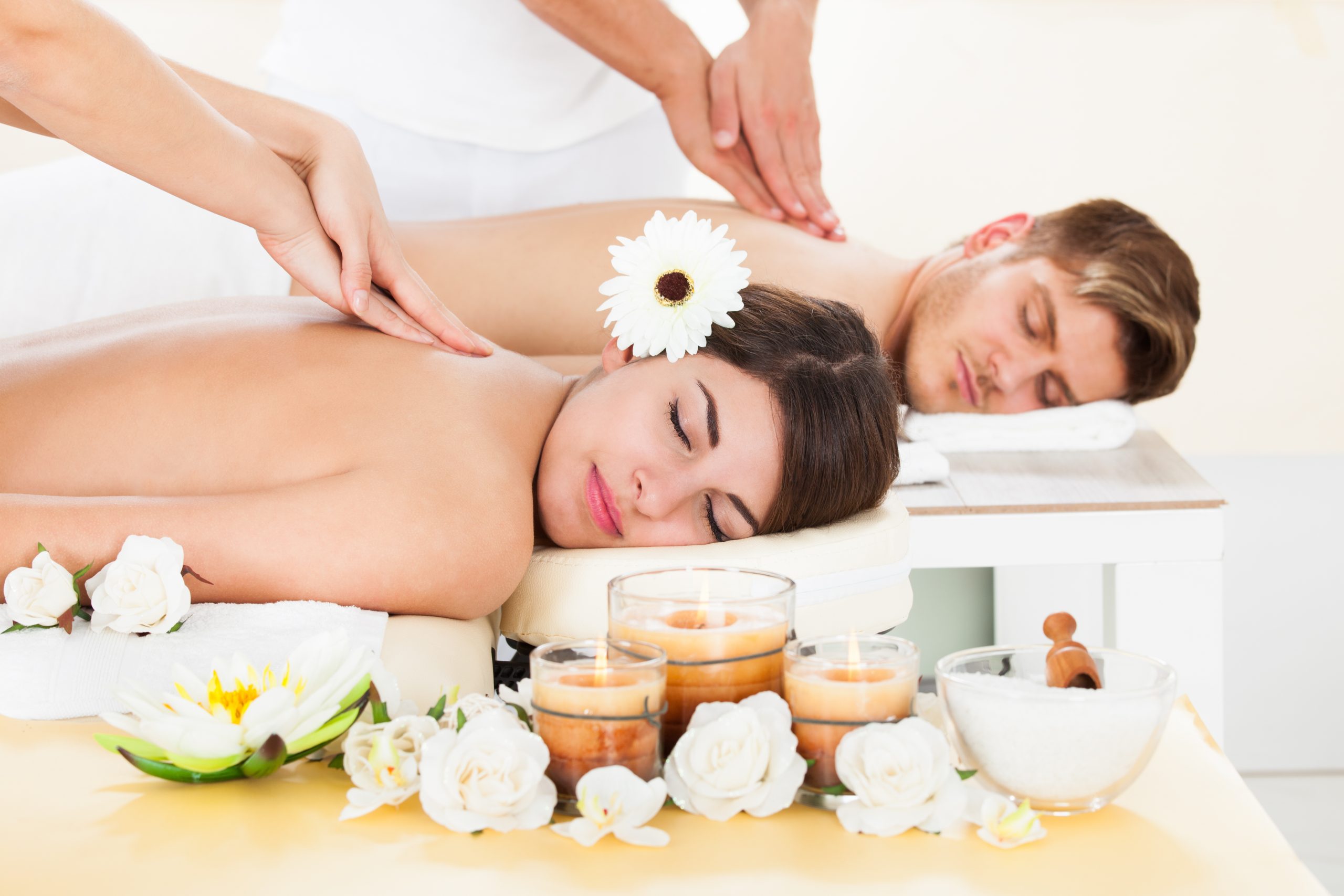
To get the most out of an aromatherapy massage—or any kind of massage—consider the following advice before scheduling one:
- Select Essential Oils Carefully
- Prioritize your safety and discuss sensitivities with your therapist to prevent reactions.
- Choose Diffusion for a continuous, gentle scent throughout the session.
- Direct Application with a carrier oil for deeper, targeted relief.
Avoid Heavy Meals Eat light before your massage to prevent discomfort. A full stomach can make lying down feel uncomfortable. Stay Hydrated and drink plenty of water before and after your massage to help flush out toxins released during the massage.
- Taking a warm shower helps to wash off any excess oil and can extend the relaxation benefits.
- Relax after your massage
If you have any questions concerning an aromatherapy massage, you should speak with your massage therapist first. According to your needs, they ought to be able to suggest particular essential oils as well as talk about the products and methods they would employ.
The therapist may be inexperienced with including aromatherapy massage in sessions if they don’t feel sure about it.
Certain essential oils may aggravate respiratory conditions like asthma. Essential oils derived from citrus fruits have the potential to increase skin sensitivity to sunlight when applied topically. After using grapefruit, orange, or any other citrus oil on your skin, stay out of the sun.
Following these simple tips can make the most out of your aromatherapy massage experience.
The Bottom Line
Aromatherapy massage creates a peaceful sanctuary. It blends massage with the healing power of essential oils. This blend creates a peaceful environment. It is for rest and renewal. It is where the body and mind find peace.
The holistic approach goes beyond mere physical calm. It delves deep into mental and emotional well-being. It nurtures a sense of deep calm and inner balance. Skilled massage techniques gently caress you. They mix with the fragrant scent of natural oils. Together, they make a cocoon of joy for your senses.
Each oil is carefully selected. They include the soothing aroma of lavender and the invigorating zest of citrus. The oils are chosen to amplify relaxation, relieve physical tension, and lift spirits. They offer a comprehensive journey to holistic well-being.
FAQ
-
Why is an aromatherapy massage incredibly soothing?
Aromatherapy massage uniquely combines the therapeutic properties of essential oils with the relaxing benefits of massage, leading to enhanced feelings of well-being and tranquility. The application of essential oils is believed to boost the massage’s ability to alleviate stress, manage pain, and elevate mood.
-
What sets an aromatherapy massage apart from a standard massage?
Aromatherapy massage offers a holistic approach to well-being by engaging the senses and addressing specific health concerns with the use of essential oils, providing a more tailored and sensory-rich experience. In contrast, traditional massages like Swedish massage focus primarily on relieving muscle tension and promoting relaxation without the added benefits of essential oils.
-
Can aromatherapy massage be applied to the whole body?
Yes, an aromatherapy massage is designed to target all areas of the body that are most susceptible to stress and tension, including the back, shoulders, neck, legs, arms, and hands, ensuring a comprehensive approach to relaxation and stress relief.
-
How frequently should one opt for an aromatherapy massage?
For optimal benefits, it’s recommended to start with an initial series of 4-6 aromatherapy massage sessions spread over several weeks. Following this initial period, maintaining the benefits with a massage every month or every six weeks can help sustain the positive effects.
-
Are there any restrictions on who should avoid aromatherapy massage?
Aromatherapy massage may require precautions for certain individuals, such as young children and the elderly, due to their increased sensitivity to essential oils. Some oils, particularly birch and wintergreen, should be avoided or heavily diluted for these groups because of the potential for adverse reactions linked to the chemical methyl salicylate, especially in children under six.

